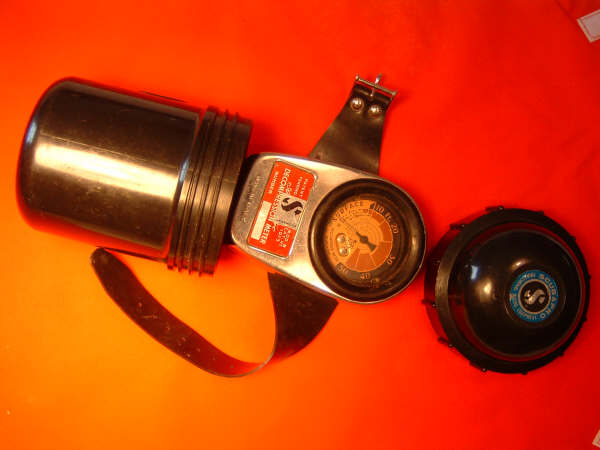
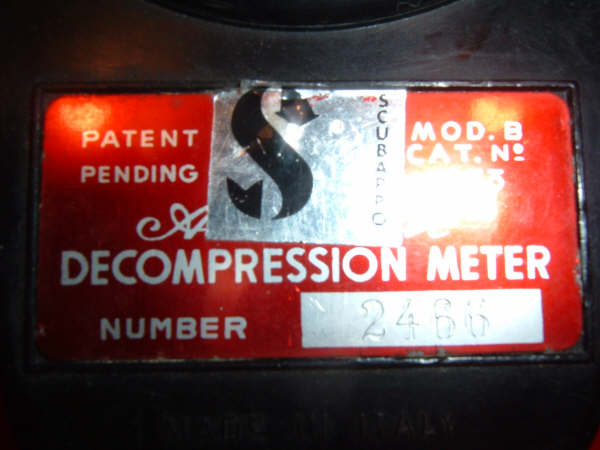
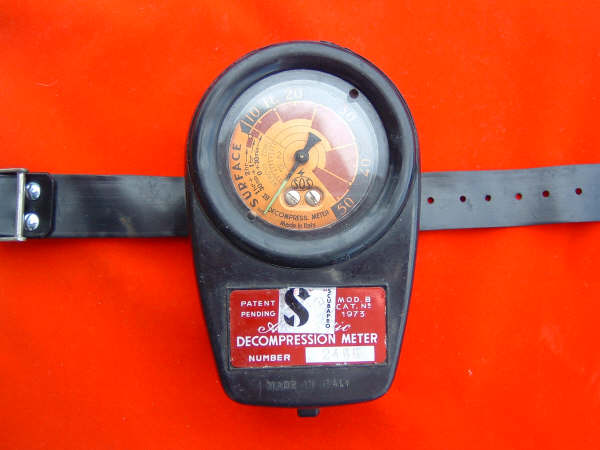
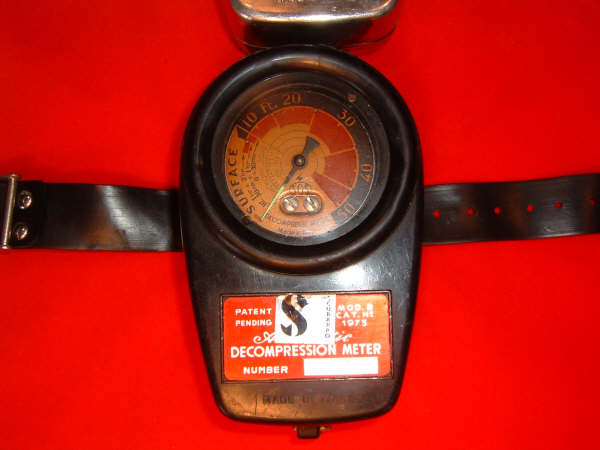
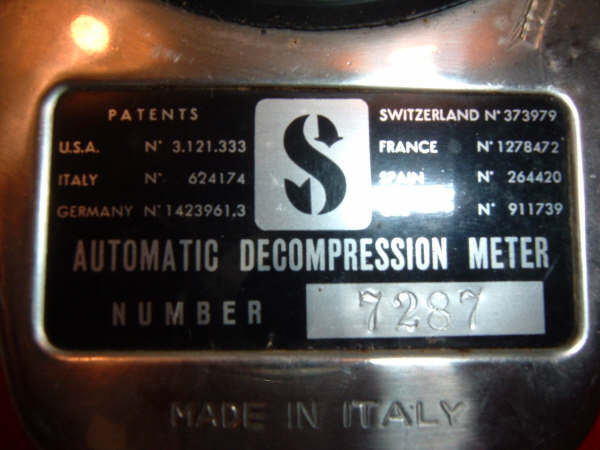
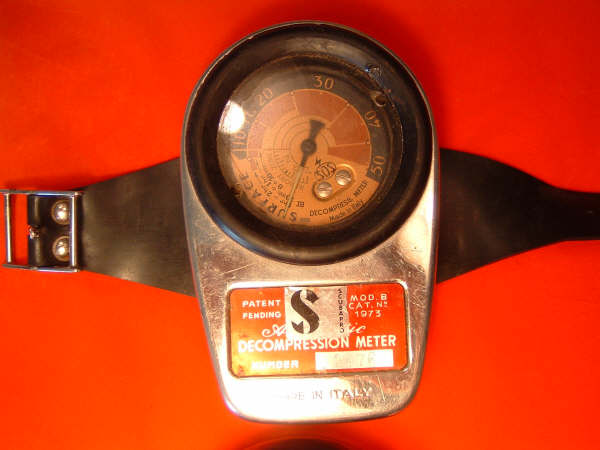
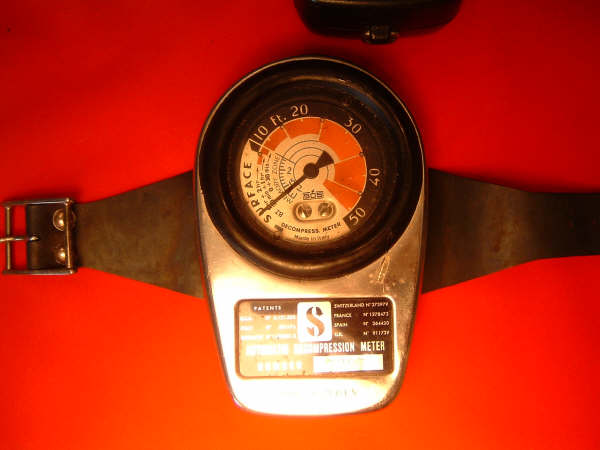
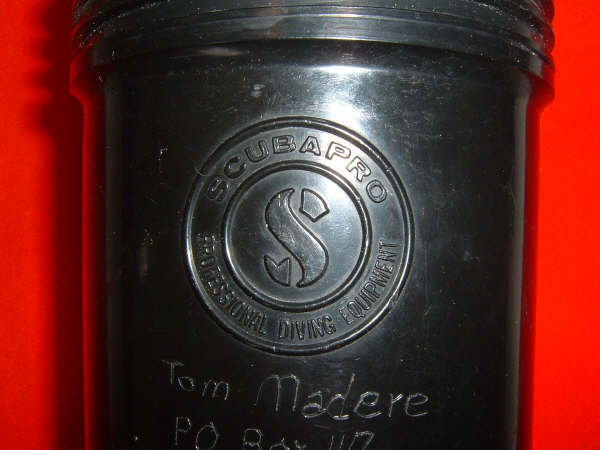
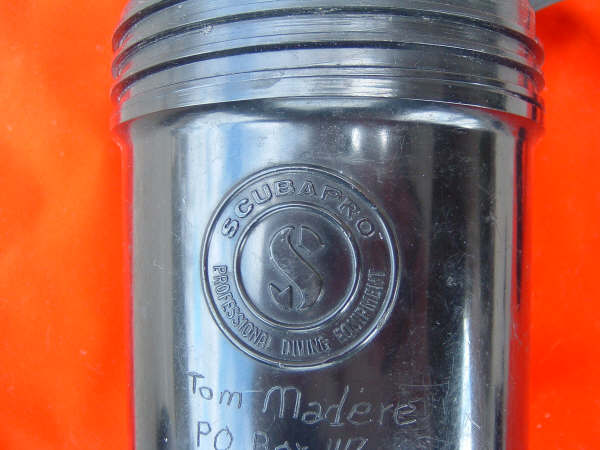
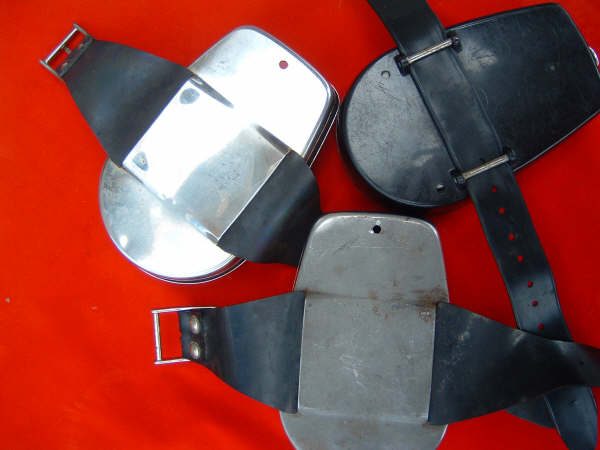
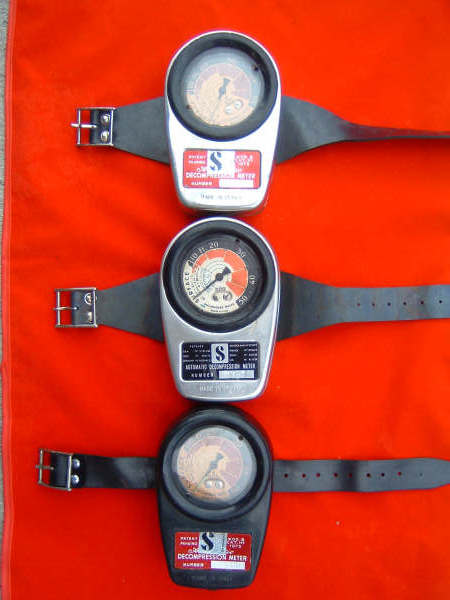
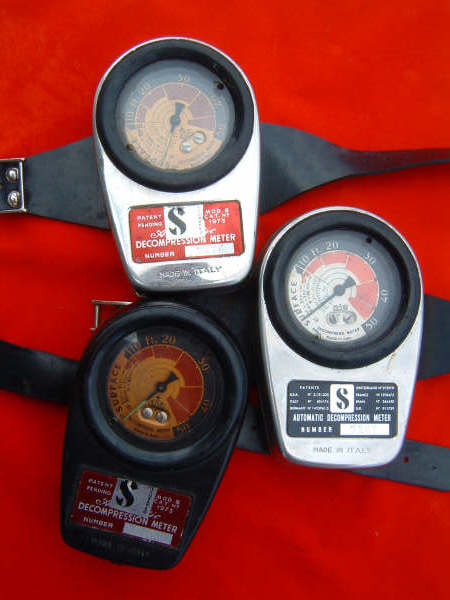
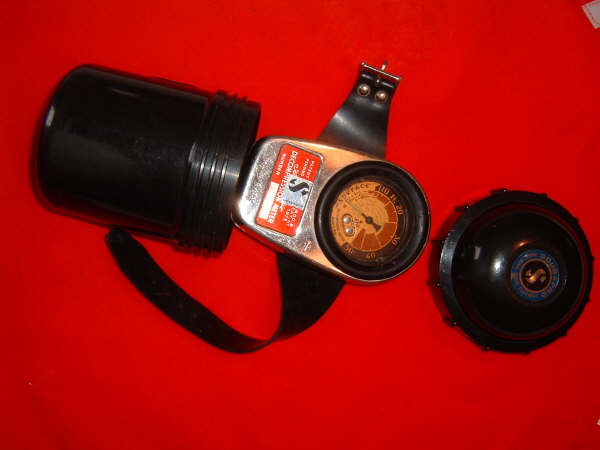
The Italian made SOS Decompression meter was marketed by many different dive manufactures in many different styles. Here I have a few. Please note the black one is a plastic case. Many divers affectionately called these mechanical dive computers BENDOMATICS. The Decompression meter came with an egg shaped carrying case designed to allow it to be transported on aircraft safely. This particular case on display was donated to The Scuba Museum by Tom Madere, a plank owner of Sand Dog.
The SOS Decompression Meter (D.C.P.) was introduced in 1959 by the Italian
firm, SOS Diving Equipment, Limited and became the first commercially successful
decompression meter. It used a ceramic filter between two chambers to estimate
nitrogen absorption and off-gassing in the diver. The meter was initially
marketed in the United States by Healthways and then by Scubapro beginning in
1963 and continuing until the late 1970s.
There were differing opinions in its day about the safety of the meter. Despite
its nickname, "Bend-o-matic," some authorities proclaimed that the bends rate
was similar for dives conducted with the meter as compared to those conducted
with the U.S. Navy tables. Dr. Carl Edmonds of Australia felt otherwise, "The
SOS decompression meter contributed to the unacceptably heavy case load during
the early 1970s." Many divers believed that the meter was quite good at
following the profile for a single dive but that it was not so good for multiple
dives on the same day. The instruction manual (not included) provided caveats to
protect the divers by imposing such limits as diving within 130 fsw, diving only
within a six hour period per day, making a decompression stop at 10 feet for all
dives over 100 feet even when the meter did not call for it, and stating that
there was no guarantee that you would not get "bent" even if the DCP was
followed.
The meter was said to go out of calibration and exhibit variability when two or
more meters were compared on the same dive. Many stories were told of how divers
misused the meter such as the one about California abalone divers discovering
that they could shorten their surface interval by putting the meter on a hot
running air compressor between dives.












